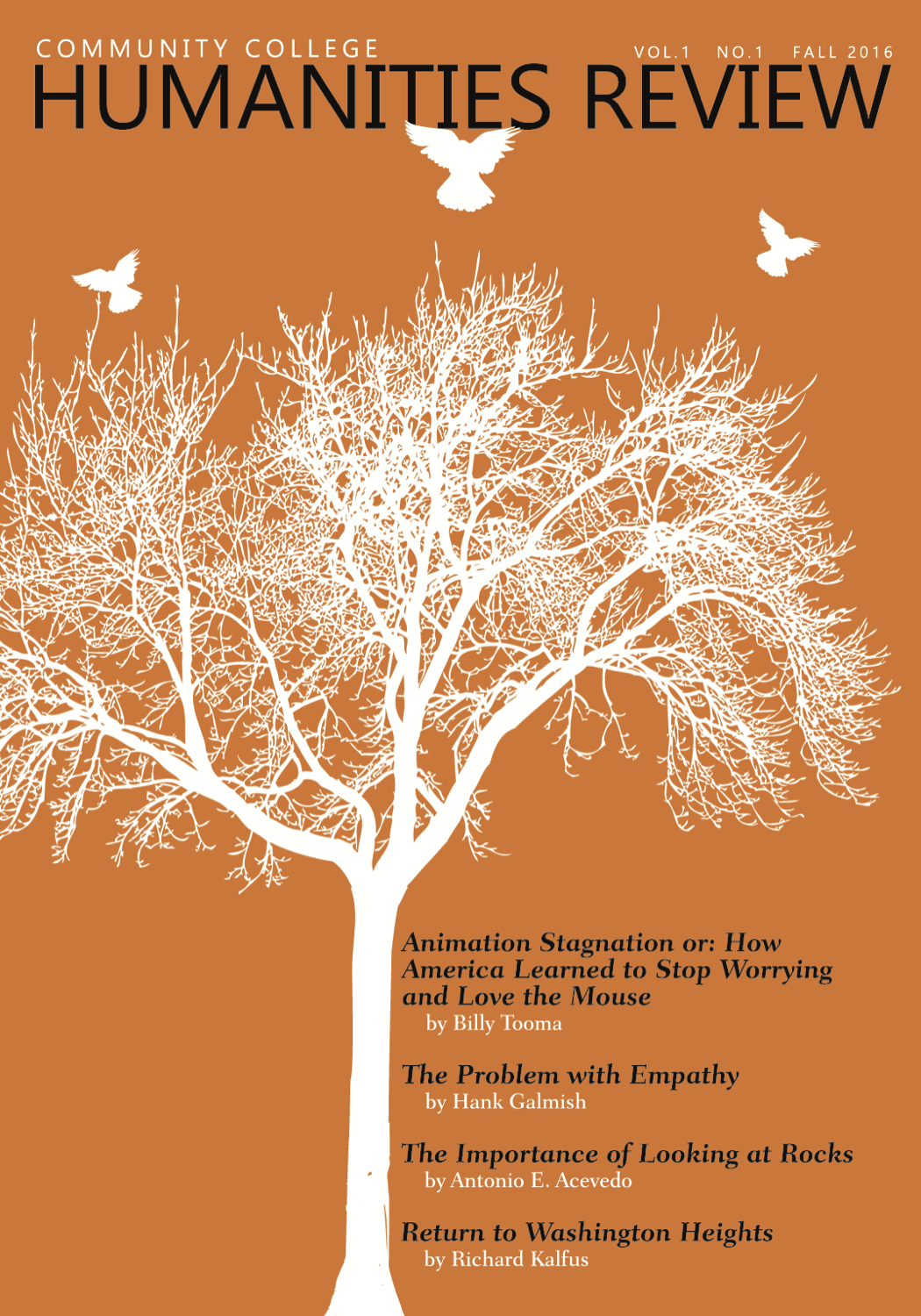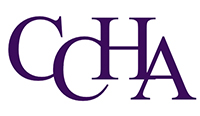Want a peek at the CCHR? See the teasers below!
Community College Humanities Review Journal
The Community College Humanities Review (CCHR) journal, published biannually by the Community College Humanities Association (CCHA), has gone through an extensive redesign and reevaluation of editorial content. Along with the publication’s historical penchant for outstanding peer-reviewed scholarship, CCHR is now publishing essays on pedagogy, faculty profiles, book reviews, columns, and first-person reflections on life as a community college humanities professor. Further information on our Submission Guidelines can be found HERE.
For “conventional” humanities disciplines such as history, philosophy, literary studies, composition, comparative religion, and ethics, CCHR provides the latest in research and pedagogy. The publication also leads the charge in expanding the definition of what studying the humanities may come to mean in the future. CCHR intends to explore, from a humanities perspective and with the intention of building bridges with other disciplines, such subjects as climate change, income inequality, environmental racism, terrorism, sustainability, media literacy, and biotechnology.
With expanded editorial content, CCHR is better able to serve CCHA’s members, faculty and administrators, as well as reach the larger higher education humanities community. CCHR is the go-to for the past, present, and future of humanities education in community colleges. With the re-launch, CCHR will assume its position as the signature publication of the Community College Humanities Association and be a welcome and important contribution for any individual and/or institution where the humanities are taught or explored.
Edited by Sydney Elliott, Volume 1, Number 1 of The Review is available via Amazon by clicking the link below. Additionally, more information about our Submission Guidelines can be found HERE.

Want a peek at the CCHR? See the teasers below!
Contact information
Sydney Elliott, Editor
sydneyelliott@tillamookbaycc.edu
Submission guidelines
Community College
HUMANITIES REVIEW
The Community College Humanities Review is published by the Community College Humanities Association (CCHA). The goal of the journal is to highlight the scholarly and creative work of community college humanities faculty. The editor encourages progressive approaches to writing about the humanities in community colleges, welcoming but also questioning conventional subject matter while inviting community college humanities faculty to take a fresh look at, for example, culture, the environment, the politics of food, climate change, genetic engineering, whatever new challenges a humanities mindset may help, in an integrated approach with other disciplines, to solve. The Community College Humanities Review strives to be the go to publication for community college humanities scholarship and creativity.
Submission Guidelines
Writing
Please query CCHR’s editor, Sydney Elliott, at sydneyelliott@tillamookbaycc.edu. Submissions will only be accepted through email in MS Word, 12 point, Times New Roman font, double spaced, left justified, with one-inch margins and page numbers in the upper right corner. There should be no headers or footers. CCHR rarely accepts any work over 7,000 words. Most texts should fall between the 2,000 – 7,000 word range. For additional format requirements concerning research submissions, see below.
Research
CCHR accepts well-researched articles by community college humanities faculty. Along with the above writing guidelines, scholar writers should follow MLA format and use endnotes (not footnotes) when necessary. Please restrict the number of explanatory or digressive endnotes that are excessively long. Limit the total number of endnotes to bibliographic references. Use superscript Arabic numbers in text, avoid the use of other symbols like asterisks. Embed tables, figures, charts, graphs into the narrative as close to the in-text reference as possible. Limit the number of appendixes.
Creative Nonfiction
Essays – CCHR accepts well-written personal experience and critical essays as well as long-form, literary journalism written by community college humanities faculty. Essays on novel pedagogy and teaching experiences are encouraged.
Profiles – Creative profiles in the long-form tradition should focus on community college humanities faculty or those who are in some significant way associated with community colleges.
Interviews
Interviews, in Q&A format, will be accepted as long as the interview subject has particular relevance to the teaching of humanities in community colleges. Please query Editor Sydney Elliott.
Fiction
CCHR accepts well written short stories of any genre, generally 1,000 to 7,500 words. Higher consideration is given to quality writing and the ability to tell a good story. Both character- or plot-driven stories welcome for review. CCHR publishes one short story per issue, more depending on the discretion of the editor. Send your best work. No previously published material. Yes on simultaneous submissions.
Poetry
Poets may submit up to five poems in any form. Publication design guidelines prohibit the guarantee of poet-designated line breaks. We’ll do our best to accommodate. Thoughtful, imaginative poems should resonate. Send your very best work. No previously published material. Simultaneous submissions are ok.
Photography
Subject to the editor’s discretion, The Community College Humanities Review accepts photography by community college humanities faculty. Photos may need to be conducive to the thematic content of a particular issue.
Sneak Peek
Andy Rusnak:
“The Beginning of Something”
Late in the afternoon, over Memorial Day weekend, 1987, West Point cadet Carr Kizzier picked up the phone to call his father.
He hadn’t yet made the decision that would both radically change the direction of his life and forever alter the relationship with the man who used to pick him up on weekends so the two could buddy up on the couch and watch classic war movies, or build vintage model fighter planes.
Almost a year earlier, right before he was scheduled to report for plebe summer, ripe from a week-long, high school graduation blow-out with friends in Puerta Vallarta, he’d met his father in New York City and they drove the 60 miles to the United States Military Academy on the west bank of the Hudson River.
“I didn’t realize how scared I was,” Kizzier said of his first day. “I was psyched, but I couldn’t eat for a couple days. My nerves were shot. I was terrified. When you’re inducted, you have these scary dudes yelling in your face. It’s humiliating, it’s supposed to be. They strip you down and they give you this gym uniform, with knee-high black dress socks and black dress shoes. By the end of the day, they want you to march around the parade ground in front of your parents, who just dropped you off. They’re trying to strip you of your identity.”
The grounds of West Point were relatively deserted that Memorial Day weekend as most plebes, yucks, cows, and firsties (freshman to seniors) were on a three-day pass. Kizzier stayed behind, pulling guard duty, and he wasn’t particularly happy about it. Despite the exhilaration of plebe summer and the months that followed, craving the physical challenge of being first through the obstacle course, quarterbacking the intramural football team, and relishing the gritty camaraderie of like-minded scholar-jocks from all over the country donning crisp, gray dress in the post-Vietnam, re-spirited, pro-soldier Reagan era, Kizzier’s inchoate, late adolescent sensibilities were starting to add up differently than expected.
Want to continue reading? Please consider purchasing a print copy or becoming a member.
Sneak Peek
Billy Tooma:
“Animation Stagnation or: How America Learned to Stop Worrying and Love the Mouse”
With all the animated films that come out these days, it can actually be somewhat difficult to distinguish a Disney-made one from the others, seeing as how the competition tries on a consistent basis to copy the style that Walt Disney himself unofficially trademarked as far back as the late 1920s. The very thought that something is being put out by Disney can lead to biased appeal. In 1994, Warner Bros. had produced an animated feature entitled Thumbelina. In one of its first test screenings, the overall audience consensus was low, discouraging the executives because they felt theirs was as fine a product as their competition. In an unprecedented move, Warner Bros. stripped their logo from the film’s opening and replaced it with the Disney one. The next test screening results were up (Schweizer, Schweizer 135).
There is something about a Disney animated film that causes people to set out to movie theaters en masse each and every time a new one is released. Some would say that the reason behind this is that Disney just keeps putting out one hit after another and audiences expect perfection each time. Unfortunately, for the company that has made Mickey Mouse a household name for over 90 years, that isn’t the case. Even though people are showing up to the cinemas, they aren’t doing it because they expect to see a screen gem. They’re doing it because it’s felt that they owe something, possibly their childhood, to Disney. But, does that mean people are being foolish for constantly shelling out money to see a Disney animated film every year or so? The answer is ‘no,’ because Disney was able to gain such an early monopoly on the industry that it allowed them to prevent the growth and maturation of animation and the American people’s taste for it. Stagnation occurred; so, when the history behind Disney’s success is examined, it can be seen that the quality of its pictures failed to stop evolving much earlier than most think, allowing the animation within its own walls, and those of its rivals, to stop growing, causing the average American the inability to view the medium as anything more than something made for children.
Want to continue reading? Please consider purchasing a print copy or becoming a member.
Sneak Peek
Richard Kalfus:
“Return to Washington Heights”
I grew up with the sounds of German/Yidddish accented English. We children of Holocaust survivors, often referred to as “second generation survivors,” were usually amused and frequently embarrassed by the foreignness of survivors as they translated German sentence structure into English structure. I remember hearing my mother talking on the phone to a friend from her same small, rural town, speaking half sentences in her regional, Mannheim German dialect, but finishing a sentence in perfect English.
Nowhere was this more apparent than in Washington Heights, the home to the largest number of German/Jewish Holocaust survivors in America. Nearly thirty thousand German Jews settled here during and after the Holocaust creating a unique community where they preserved their Jewish identity, while at the same time feeling grateful to call themselves Americans. My parents were among them. They were not orthodox Jews in a neighborhood of many observant Jews; I would watch them, and “being a real American teenager,” I saw them as Jews who were out of touch with the real world. Those orthodox German Jews seemed to have transported with them religious customs and rituals of a time when Jews lived in isolated ghettos. At the same time, I was acutely aware that it was their (our) Jewishness which marked them/us in Nazi occupied Europe as enemies. I became sadly aware of this quite often in the neighborhood, in a subway or bus, I noticed the tattooed numbers of an Auschwitz survivor on their arm. When quite young, I would hear the whispered voice of my mother, “don’t stare.”
Want to continue reading? Please consider purchasing a print copy or becoming a member.
